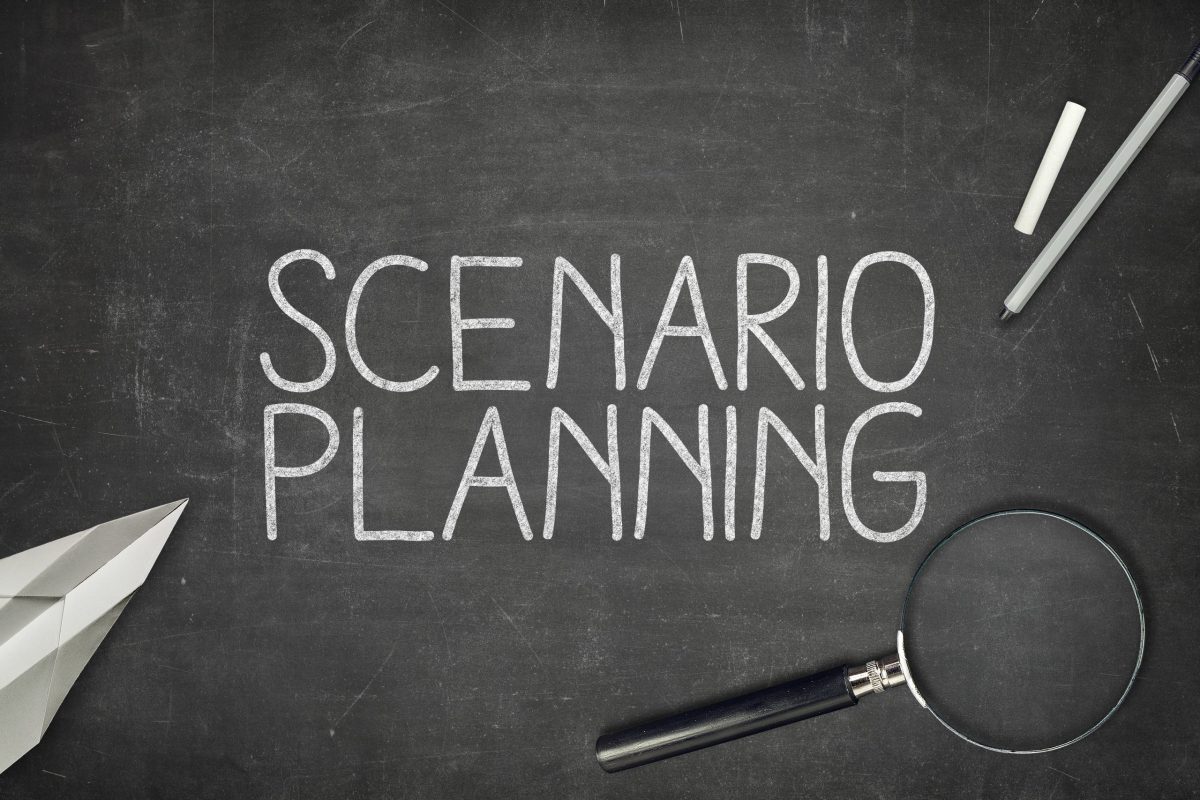
The 2024 BDO Nonprofit Benchmarking Survey Is Out
10.17.2024 | Linda J. Rosenthal, JD

There’s an important new report that presents the philanthropy sector with an intriguing analytical framework for “scenario planning” now and in the coming 12-18 months.
For the past several months, Deloitte LLP has funded a study by Gabriel Kasper and Justin Marcoux of the Monitor Institute, Deloitte’s social-change consultancy. Conducted in cooperation with leading nonprofit think tanks, these researchers interviewed a “diverse” group of sector leaders around the United States to learn “what these people on the ground in the midst of the unfolding crisis were seeing and experiencing and what they anticipate might be coming over the horizon.” The goal was to spark a “‘futures-thinking’ process” to assess “critical uncertainties” right now, pinpoint the new realities arising from the pandemic, and “explore possible future scenarios that may emerge….”
Published on July 20, 2020, COVID-19 scenario planning for nonprofit and philanthropic organizations is 26 pages long, culminating in a detailed presentation of four possible models, each of which can – and should – be the basis of critical “scenario-planning” exercises for each nonprofit organization and philanthropy.
“The idea is for organizations to live in all of the scenarios, and not just plan for one,” says Monitor’s Managing Director Gabriel Kasper.“Resilient organizations are the ones that have a broader array of options and are prepared to shift depending on how the future plays out.”
Fair warning, though: Even the best of the four models presented in the Report is troubling; the worst is dark, indeed.
A key question for each organization is how to plan its immediate as well as medium- and long-term future – if, indeed, planning is even possible in the face of the massive uncertainty we now confront over four months into the COVID-19 pandemic.
When the emergency so rapidly swept over the United States back in March, there was no time to plan … even how to plan for this level of unprecedented chaos and disruption. Normalcy was shattered quickly. Not a single sector of American society was left untouched. The nonprofit community was hit especially hard because it not only entered crisis mode for itself but also many groups undertook – as usual during disasters and crises – the added burden of providing emergency aid and services to others.
The Report authors note that “many organizations trying to navigate through this moment […have found …] themselves alternately paralyzed or swamped by a crushing number of choices, without much scaffolding to guide their decision-making.”
In the “Crisis Planning” section of our firm’s special COVID-19 resources micro-site, we explained the early dilemma for nonprofits trying to consider both the near future and “their ultimate survivability.”
Some experts urged nonprofits and foundations to follow a time-tested formula: to activate and update their usual strategic-planning processes. See, for example, Quickly Revise Your Nonprofit’s Strategic Plan With These 3 Steps (April 23, 2020) Jarrett Ransom, MBA, Bloomerang Blog [“Organizations use strategic planning to provide a structured process to define success for an organization, determine the operational and programmatic steps to get there, and align resources and staff to achieve the goal within a given time frame.”]
See also Strategy during COVID: no time like the present to review, update your plan (April 14, 2020) Doug Schneider, Philanthropy Daily and Planning during COVID: creating a strategic plan, even now (April 16, 2020) Doug Schneider, Philanthropy Daily [“While reviewing your plan in light of the current crisis, you should turn this around: start with the proximate and work toward the higher-level landmark goals and strategies. What is coming up in the near term that you need to adjust or update?”]
But there are three key problems with this approach using the “strategic planning” formula. First, many nonprofits have never engaged in any strategic planning exercises at all. Second, even groups that had strategic plans in place (including business-continuity procedures for emergencies) at the outset of the pandemic now understand these plans are seriously inadequate in light of the ongoing catastrophic circumstances. Third, according to some experts, strategic planning is a flawed model even in normal times.
Among the latter is Ted Bilich of Risk Alternatives. See Should Your Nonprofit Engage in Strategic Planning During Uncertain Times? No: Here’s 3 Steps to Take Instead (April 14, 2020). “Despite being widely touted and broadly used,” Mr. Bilich writes, “strategic planning has always had its critics.” He cites, for instance, The Strategic Plan is Dead. Long Live Strategy (January 10, 2013) by Dana O’Donovan & Noah Rimland Flower in the Stanford Social Innovation Review. They argue that “‘the trusted, traditional approach to strategic planning is based on assumptions that no longer hold,” and decry the “thick binder gathering dust on a shelf next to other thick binders from five and ten years past….”
Mr. Bilich also points to Joan Garry’s article in The Chronicle of Philanthropy from October 2019. The title is self-explanatory: Strategic Planning Sucks the Life Out of Nonprofits.
Kate Barr, the President and CEO of Propel Nonprofits also recommends tossing out that traditional approach. In Proactive, Not Perfect, Scenario Planning: A Short Guide for Our Times (May 5, 2020), she explains in The Nonprofit Quarterly that “…when your mind is swirling with what-ifs, it’s hard to know what questions to start with, let alone what actions to take. This is where scenario budget planning can be your friend. Whether the effects of the coronavirus pandemic have been immediate for your nonprofit or you’re bracing for what’s to come, you should be proactively preparing for the possible paths ahead….”
She acknowledges that “…it’s very likely” that all of the scenarios that you and your team conjure up in your planning sessions “will be wrong because there are so many unknowns right now – but so is your old budget.” The goal of “scenario planning,” she adds, is not to predict the future. Instead, this approach “… give[s] you an ordered way of thinking and making decisions. It’s meant to help turn those ‘what if?’ questions into ‘what we will do if…’ plans.”
The Monitor Institute Report lands fully on the side of the “scenario-planning” proponents. The authors define it as “an approach to thinking about the future that is rooted in the recognition that even in the best of times, we can’t accurately anticipate what will come ahead. Instead decision-makers can begin to imagine multiple plausible pictures of the future and rehearse how their organizations might respond.”
It’s a method and set of analytical tools best suited – [if any approach can be workable at all] – to this “moment of hyper-uncertainty for social sector organizations.”
In the next post in this series, we’ll review the four models presented in the Report. In an initial chart, these four possibilities are visualized by a “plus-sign” spectrum including a horizontal line as well as a vertical line.
The horizontal line represents the left to right – that is, “lower impact” to “higher impact” – spectrum of the query: “What is the continued severity of the crisis?” The authors define it as “…level of harm and dislocation experienced by the population as a result of the depth and duration of the health and economic impacts of the pandemic.”
The vertical line represents the top to bottom sliding answers to the query: “What is the level of social cooperation?” That’s defined as the “… relative willingness of society to work together across lines of difference towards common or collective goals.”
The “best” scenario is shown in the upper left quadrant. It represents the lower end of the crisis-severity spectrum coupled with high levels of social cooperation. No one reading this post needs to check today’s headlines to know that we are not squarely in that best-case position at this moment in the United States.
“No one knows what the future will hold,” explain the Report authors before moving on to reveal the four chosen models. We don’t know what the future will hold “…for the progression and spread of the virus, … for the economy, [or] even for the most basic aspects of how our country and communities will function in the weeks and months ahead.”
They add this cheery note as well: “With so many variables and wildcards in play” including the racial-justice protests, the November election, and the coming hurricane season – just to name a few – “it’s quite possible that COVID-19 won’t be the most important story of 2020.
One thing is clear, though, we will not – and should not – be returning to “normal.” See Philanthropy Thought Leaders On Not Returning to “Normal” (August 6, 2020).
— Linda J. Rosenthal, J.D., FPLG Information & Research Director
